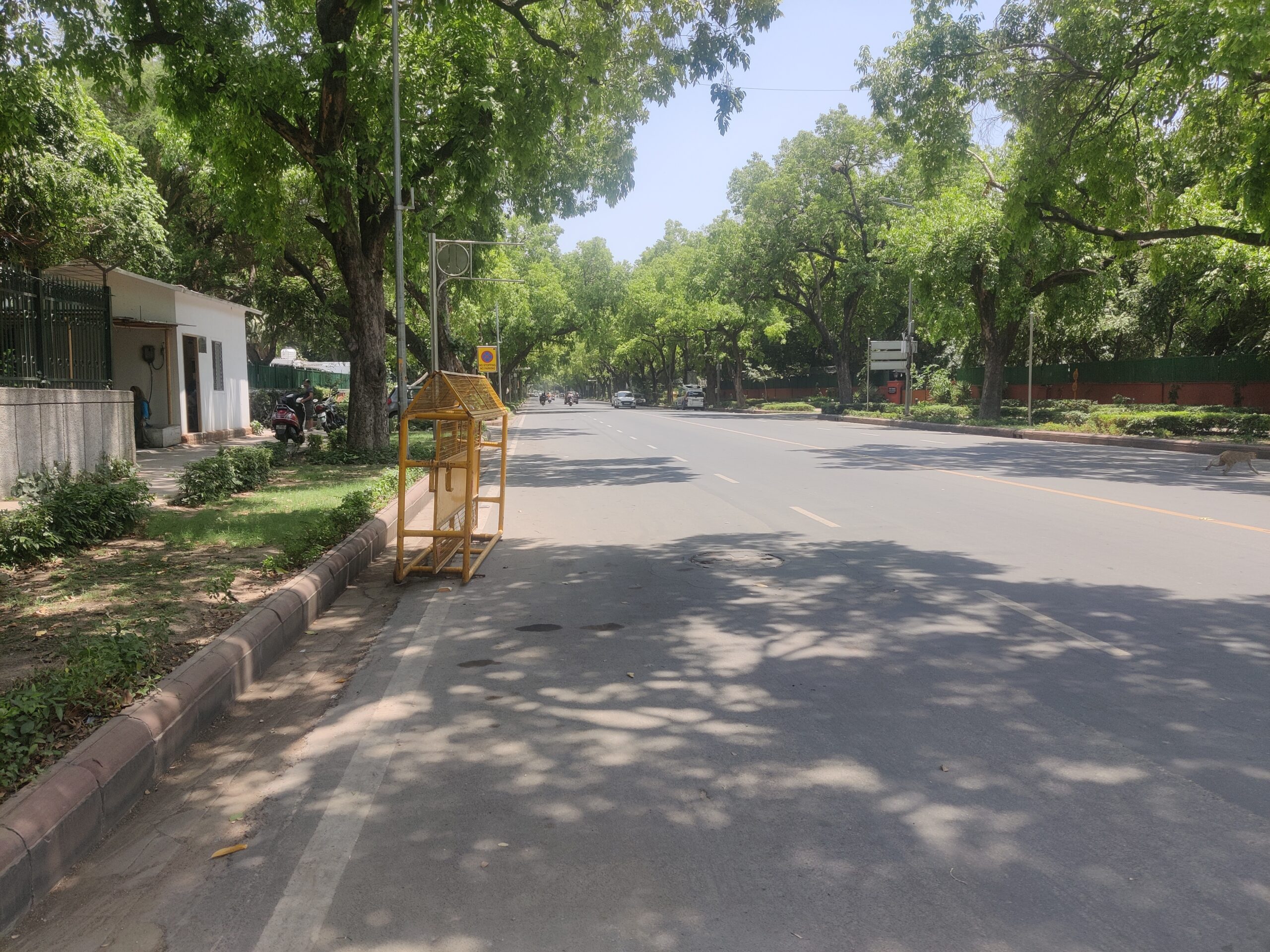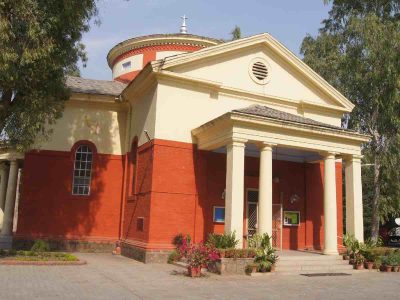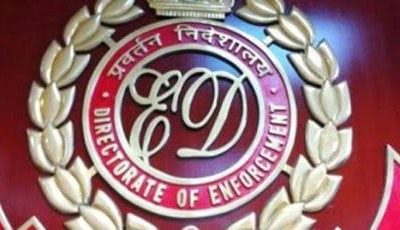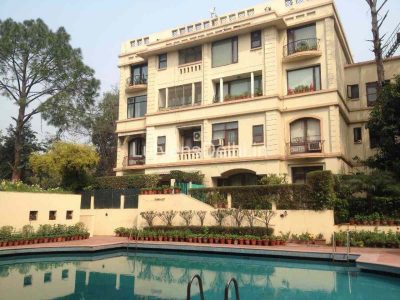If you drive down from Janpath to Moti Lal Nehru Marg, you would notice more cars on the road than pedestrians on pavements. With even common people not seen here so often, the thought of a group of sadhus moving there wouldn’t even cross your mind nowadays.
But 76 years ago, when Jawaharlal Nehru was preparing to visit the then Viceroy’s House (later President House) on the night of August 14, 1947 to take the oath as the first Prime Minister of independent India, some sadhus appeared at his 7, York Road (now Moti Lal Nehru Marg) residence to bless him.
Larry Collins and Dominique Lapierre wrote in ‘Freedom at Midnight’ that even though Nehru was not a religious man, he gladly welcomed the sadhus and they put tilak on his forehead.
Well, 17, York Road in the heart of New Delhi was the first residence of Nehru in the Capital. It is a different matter that only Teen Murti House is identified as his residence in Delhi. He occupied it when he became the head of interim government on September 2, 1946. He lived there till the end of August, 1947, before he moved to the Robert Tor Russel-designed Teen Murti House.
In his book From Partition To Operation Bluestar: Tales Of A Journalist, Bureaucrat, Spy, Somnath Dhar claims, “17, York Road was used as his (Nehru’s) headquarters during the whole period of negotiations for India’s independence. Once India got freedom from the vice-like grip of British government, communal riots broke out in different parts of the country. Refugees from Punjab were pouring in Delhi.
They had many grudges and grouses against the government for not ensuring their safety. Yet, 1 7 , York Road remained unguarded and anybody could walk into the main hall of the house, which was used as reception room. Considering the times we live in, it seems impossible that anybody could enter the house of a top leader without being frisked.”
Nayantara Sehgal, noted author and niece of Nehru, too has lived at 17, York Road.
When the country got freedom, she was not in India. Later she came to Delhi to meet her uncle.
“There was no Prime Minister’s House at that time. He was living in 17, York Road and all I could see was how the huge compound was filled with tents for refugees. It was a very grim situation,” she once wrote.
Interestingly, when Nehru was living at 7, York Road, his home minister Sardar Vallabh Bhai Patel occupied 1, Aurangzeb Road—at the request of its owner, his friend Banwari Lal—just across the road from the ‘Out’ gate of Nehru’s house.
While staying at 17, York Road, Pt Nehru used to visit Birla House at 5, Albuquerque Road (now Tees January Marg) very often to meet Gandhiji.
Of course, both these places are in the vicinity of the other.
Sometimes, he would call cabinet meets of his interim government at his York Road residence. Such meetings used to be attended by the likes of Sardar Patel, Babu Jagjiwan Ram, Liaquat Ali Khan, who later became the first Prime Minister of Pakistan among others.
Interacting with local Kashmiris
The 7, York Road had seen many informal get-togethers between Nehru and Kashmiri community of Delhi. A very vibrant Kashmiri community was settled in Delhi-6 since long. It is said that a very large number of Kashmiri pandits shifted to Delhi and other places like Agra and Allahabad between 1850 to 1900 from their homeland.
Among them were the Kunzrus, Haskars, Rehus, Dars, Takrus, Kauls, Zutshis, Katjus and Rainas.
The ancestors of Nehru’s wife, Kamala, too migrated to Delhi during those years only. They built their big Havelis in Sitaram Bazar.
Some of the Havelis of those Kashmiris are still there in Sita Ram Bazar and Gali Kashmiriyan areas though most of them have moved to other parts of the Capital.
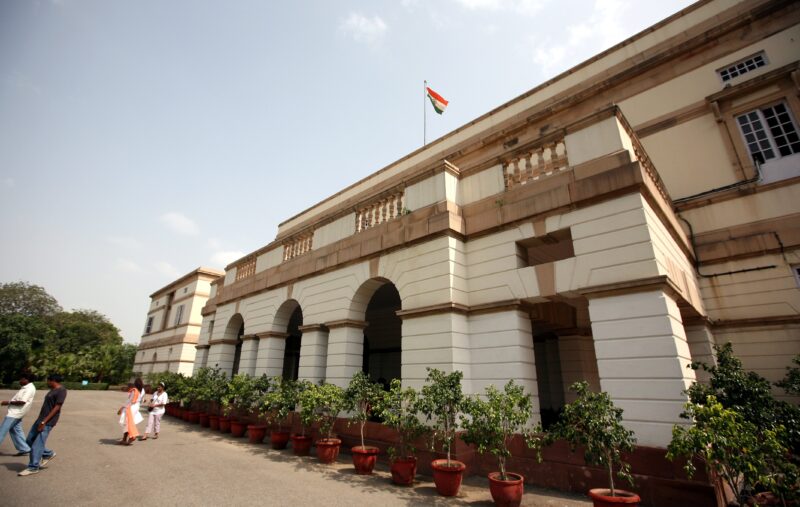
The descendants of those Kashmiri migrants speak Hindustani, not Kashmiri. Yet, they still prefer their cuisines like Wazwan and others. According to Urdu poet, the late Gulzar Zutshi Dehlvi, “While Pt Nehru was not born in Kashmir, he was a Kashmiri by heart. He loved anything and everything of Kashmir. The local Kashmiri community used to organise mouth-watering lunches at 7, York Hotel with his consent. Both Hindu and Muslim Kashmiris based in Delhi used to attend those get-togethers. Guests were served both non-vegetarian and vegetarian dishes from Kashmir. They were prepared by local Kashmiri cooks.”
Dehlvi passed away in 2021. He was a senior statesman of his community in Delhi.
He even invited Kashmiri Pandit Lakshmi Dhar Shastri, a Sanskrit professor at Delhi University, to solemnise the wedding of his daughter Indira with Feroze Gandhi on August 2, 1942.
Shastri taught Sanskrit at St Stephen’s College from 1922 to 1949. He was a close relative of Gulzar Dehlvi. It was Shastri who conceived the motto of Delhi University, Nishtha Dhriti Satyam (Dedication, Steadfastness and Truth). I
t is also said that Nehru had never visited his in-laws’ house in Sita Ram Bazar while living at York Road or at Teen Murti House even though it was just a few miles away.

